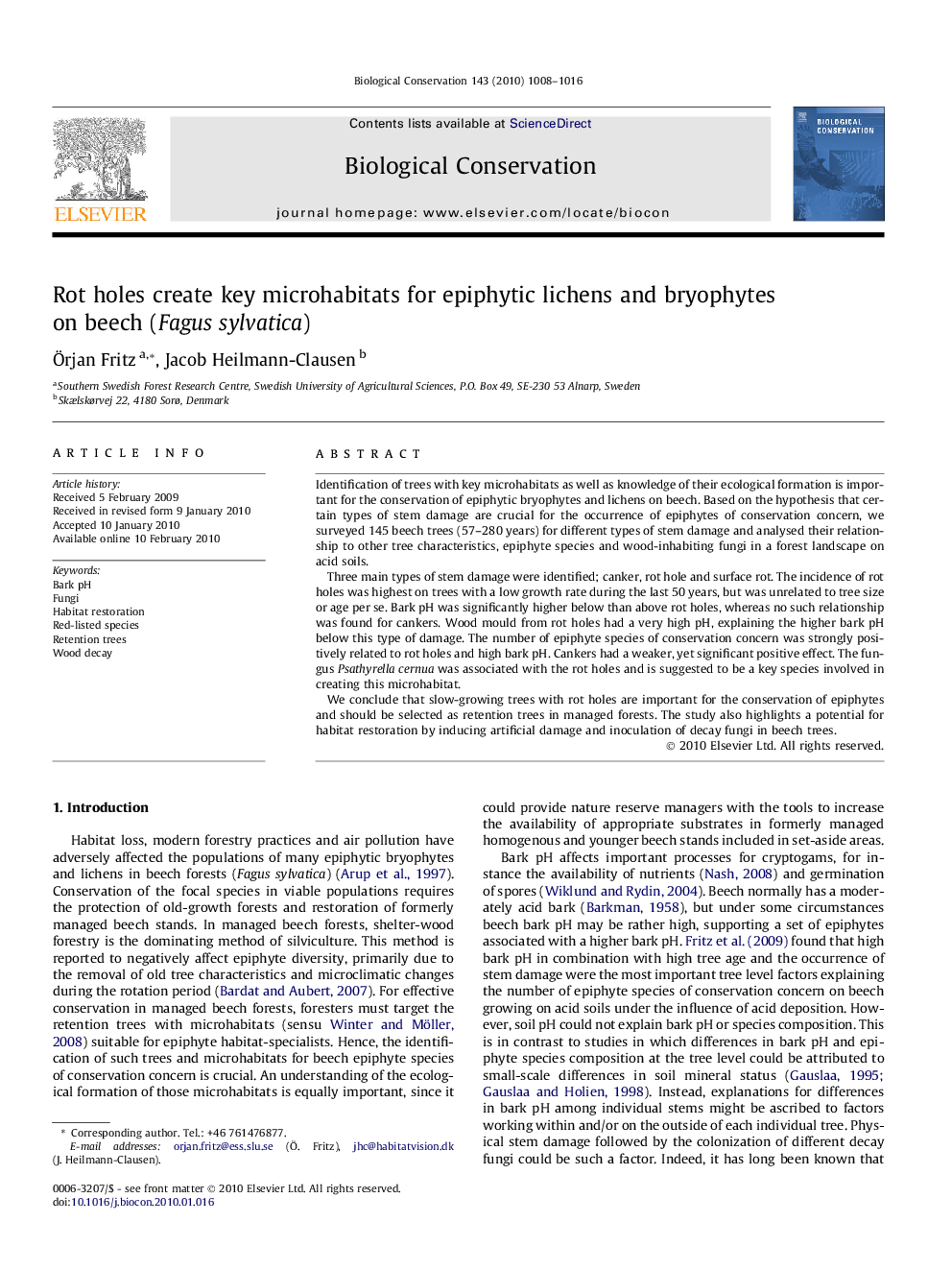| کد مقاله | کد نشریه | سال انتشار | مقاله انگلیسی | نسخه تمام متن |
|---|---|---|---|---|
| 4385785 | 1304549 | 2010 | 9 صفحه PDF | دانلود رایگان |

Identification of trees with key microhabitats as well as knowledge of their ecological formation is important for the conservation of epiphytic bryophytes and lichens on beech. Based on the hypothesis that certain types of stem damage are crucial for the occurrence of epiphytes of conservation concern, we surveyed 145 beech trees (57–280 years) for different types of stem damage and analysed their relationship to other tree characteristics, epiphyte species and wood-inhabiting fungi in a forest landscape on acid soils.Three main types of stem damage were identified; canker, rot hole and surface rot. The incidence of rot holes was highest on trees with a low growth rate during the last 50 years, but was unrelated to tree size or age per se. Bark pH was significantly higher below than above rot holes, whereas no such relationship was found for cankers. Wood mould from rot holes had a very high pH, explaining the higher bark pH below this type of damage. The number of epiphyte species of conservation concern was strongly positively related to rot holes and high bark pH. Cankers had a weaker, yet significant positive effect. The fungus Psathyrella cernua was associated with the rot holes and is suggested to be a key species involved in creating this microhabitat.We conclude that slow-growing trees with rot holes are important for the conservation of epiphytes and should be selected as retention trees in managed forests. The study also highlights a potential for habitat restoration by inducing artificial damage and inoculation of decay fungi in beech trees.
Journal: Biological Conservation - Volume 143, Issue 4, April 2010, Pages 1008–1016